Filter by
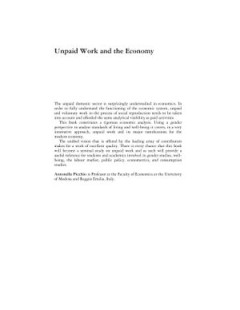
Unpaid Work and the Economy
In economics, the voluntary sector is surprisingly understudied. In order to fully understand economics, unpaid and voluntary work needs to be taken into account and afforded the same status as paid activities. This book constitutes a rigorous economic analysis with special emphasis on gender issues and covers every conceivable angle of unpaid work and all its ramifications for the modern econo…
- Edition
- -
- ISBN/ISSN
- -
- Collation
- -
- Series Title
- -
- Call Number
- -
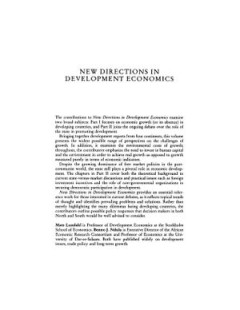
New Directions in Development Economics
New Directions in Development Economics is divided into two parts. The first half considers the dilemna of growth with special reference to its environmental cost. The second half focuses on the role of the state in the context of the growing dominance of the free market argument. The contributors include Paul Collier, Partha Dasgupta, Ronald Findlay and Deepak Lal.
- Edition
- -
- ISBN/ISSN
- -
- Collation
- -
- Series Title
- -
- Call Number
- 650
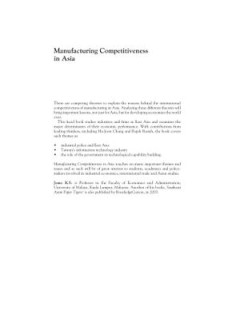
Manufacturing Competitiveness in Asia
There are competing theories to explain the reasons behind the international competitiveness of manufacturing in Asia. Analysing these different theories will bring important lessons, not just for Asia, but for developing economies the world over. This lucid book studies industries and firms in East Asia and examines the major determinants of their economic performance. With contributions from …
- Edition
- -
- ISBN/ISSN
- -
- Collation
- -
- Series Title
- -
- Call Number
- 650
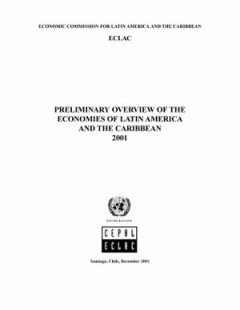
Preliminary Overview of the Economies of Latin America and the Caribbean 2001
The severe slowdown in the world economy in 2001 cut short the recovery that had begun in 2000 and dashed hopes that Latin America and the Caribbean were about to embark upon a new growth cycle. Unlike the crises of the 1990s, which were confined to a limited group of countries, the slowdown of 2001 engulfed the region as a whole. The impact of the adverse international environment impinged upo…
- Edition
- -
- ISBN/ISSN
- -
- Collation
- -
- Series Title
- -
- Call Number
- 650
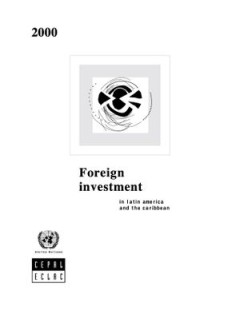
Foreign Investment in Latin America and the Caribbean 2000
This study seeks to provide greater insight into foreign direct investment (FDI) in Latin America and the Caribbean. A corporate strategy-based analytical framework has been used to interpret the copious yet heterogeneous information available on the subject. The research programme employed by the Unit on Investment and Corporate Strategies is structured around the examination of specific situa…
- Edition
- -
- ISBN/ISSN
- 9789213633656
- Collation
- -
- Series Title
- -
- Call Number
- 650

Economic Survey of Latin America and the Caribbean 2001-2002
The present edition of the Economic Survey of Latin America and the Caribbean, annual publication that appears every year since 1948, consists of three parts and one statistical appendix. The first part of the Survey covers the main aspects of the regional economy from a sectorial and thematic perspective. Chapter 1 deals with the situation of the first half of 2002 and the prospects for the ye…
- Edition
- -
- ISBN/ISSN
- 9789211558388
- Collation
- -
- Series Title
- -
- Call Number
- 650
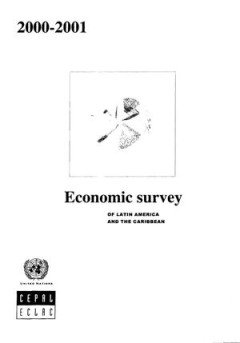
Economic Survey of Latin America and the Caribbean 2000-2001
This is the fifty-third edition in this series. The first part of the Survey covers the regional economy. It begins with a chapter dealing with the situation in the first half of 2001 and the prospects for the year as a whole. This was previously published separately with the title 2001: Current Conditions and Outlook. The analysis of the various aspects of the regional economy in 2000 consists…
- Edition
- -
- ISBN/ISSN
- -
- Collation
- -
- Series Title
- -
- Call Number
- 650

Beyond Money : A Postcapitalist Strategy
A fascinating portal into arguments about why we need to get beyond money' - Harry Cleaver What would a world without money look like? This book is a lively thought experiment that deepens our understanding of how money is the driver of political power, environmental destruction and social inequality today, arguing that it has to be abolished rather than repurposed to achieve a postcapitalis…
- Edition
- -
- ISBN/ISSN
- 9781786807809
- Collation
- -
- Series Title
- -
- Call Number
- -

Classical Economics and Modern Theory
In this thought-provoking book, well known economists Kurz and Salvadori cover original findings and new vistas on old problems. They cover: alternative interpretations of classical economists new growth theory the relationship between Sraffian theory and Von Neumann the treatment of capital in neoclassical long-period theory. Incorporating cutting-edge research and new work, this book will be …
- Edition
- -
- ISBN/ISSN
- -
- Collation
- -
- Series Title
- -
- Call Number
- 650
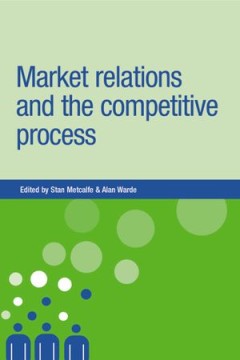
Market Relations and the Competitive Process
There has been increasing interest and debate in recent years on the instituted nature of economic processes in general and the related ideas of the market, in particular the competitive process. This debate lies at the interface between two largely independent disciplines, economics and sociology, and reflects an attempt to bring the two fields of discourse more closely together. This book exp…
- Edition
- -
- ISBN/ISSN
- 9780719064685
- Collation
- -
- Series Title
- -
- Call Number
- 650
 Computer Science, Information & General Works
Computer Science, Information & General Works  Philosophy & Psychology
Philosophy & Psychology  Religion
Religion  Social Sciences
Social Sciences  Language
Language  Pure Science
Pure Science  Applied Sciences
Applied Sciences  Art & Recreation
Art & Recreation  Literature
Literature  History & Geography
History & Geography